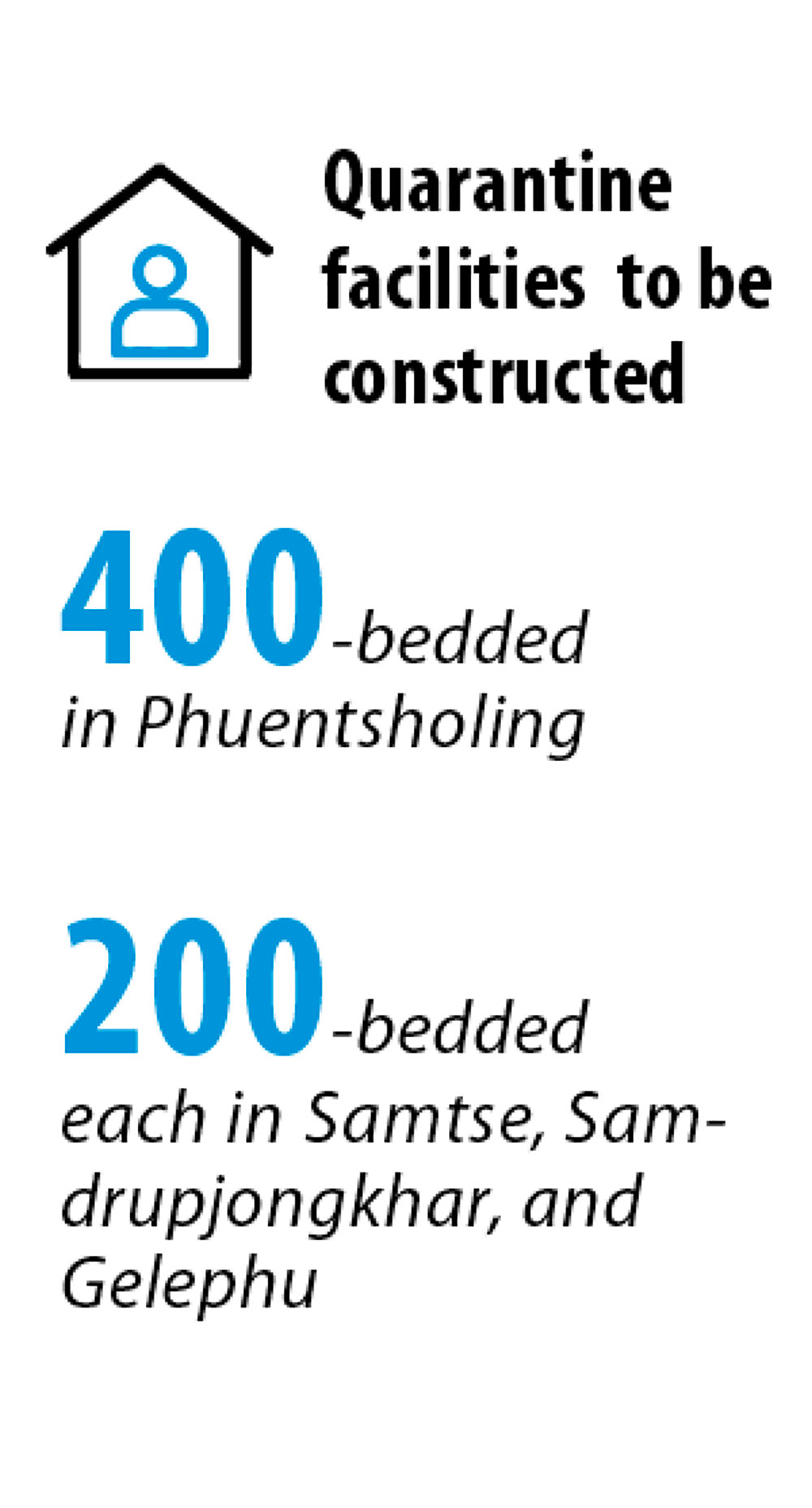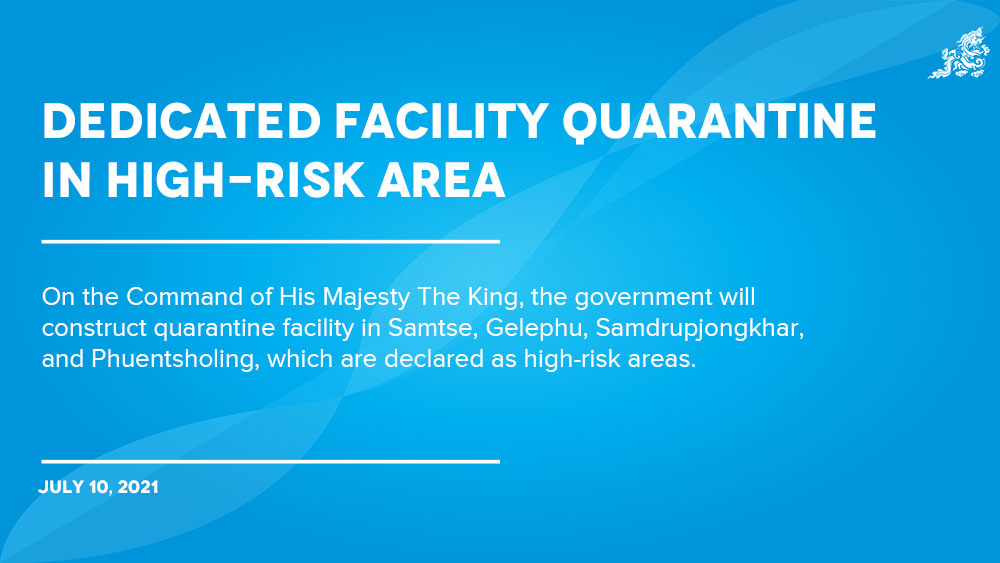Yangchen C Rinzin
On the Command of His Majesty The King, the government will construct quarantine facility in Samtse, Gelephu, Samdrupjongkhar, and Phuentsholing, which are declared as high-risk areas.
This is expected to address shortage of quarantine facilities for both Bhutanese and non-Bhutanese travelling within the country from high risk and those travelling from outside. When hotels are not enough in the south, people are quarantined in Thimphu or other dzongkhags.
Prime Minister Dr Lotay Tshering said that 400-bedded quarantine facilities in Phuentsholing, 200-bedded each in Samtse, Samdrupjongkhar, and Gelephu would be constructed. Samtse has 200-bedded quarantine centres at present.

Since the government implemented quarantine system to avoid Covid-19 risks, more than 65,000 people have been quarantined at a cost of Nu 700 million so far. The expenditure includes both 21-mandatory quarantine and seven-day quarantine, which is mandatory for those travelling from high-risk to low-risk dzongkhag.
“This means about 1,000-bedded quarantine facilities [together] will be constructed, which will be decent quarantine facilities that can accommodate people in family, cohort or as individual,” Lyonchhen said. “The design will be done with modified engineering materials like prefab home.”
There are about 302 hotels used as quarantine centres across dzongkhags at present, which also includes institutions, guesthouses, containment centres, and office halls.
Lyonchhen said that having such dedicated quarantine facilities could also help various agencies, including private companies to get labourers when most of the construction activities are frozen due to lack of labourers.
Lyonchhen said His Majesty has also commanded labour and human resources ministry to look into the management of foreign labour force.
The director-general of immigration, who is also a member of the southern Covid-19 task force, is leading the project implementation team. There is also a project steering committee, project implementation unit and technical team housed at works and human settlement ministry in Thimphu.
“The drawings will be ready and approved by this week,” Lyonchhen said, adding then the finance will have resourced too.
Lyonchhen added that His Majesty has also personally visited the site and granted approval for the construction.
The government is yet to decide on the modality on how to manage the centres and a team of experts are already in discussion. “We’re looking into whether the government or works and human settlement ministry or relevant agencies should manage,” Lyonchhen said.
However, with the new quarantine facilities coming up, many questioned whether the hotels would no longer be used as quarantine facilities. Many said this had helped them run the hotels and avoid staff lay-offs.
Lyonchhen said that if there are more travellers, government would continue to use hotels, but if new quarantine centres can accommodate enough, some hotels might be asked to stop functioning as a quarantine facility.
“The message from His Majesty is very clear; we can’t be certain about future pandemics. We must be prepared,” Lyoncchen said. “This is because for any kind of disease infection, quarantine is a norm.”
However, as for the post-Covid-19 pandemic, if all the centres are not needed plan has already been made where some quarantine facilities will be redesigned into affordable housing like for small family units or bachelor quarter.
“The experts have already thought about its future use and the engineers have assured that the design is in such a way to address future use or post-pandemic,” Lyonchhen added. “And when we require, we can change it back to the quarantine facilities.”
Edited by Jigme Wangchuk


